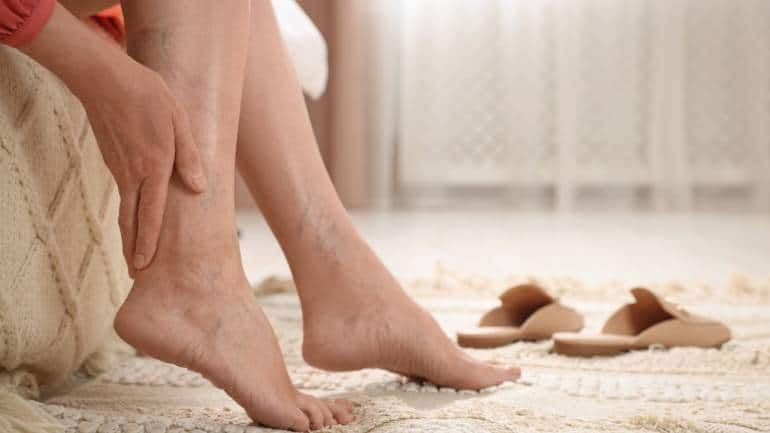
VARICOSE VEINS TREATMENT: SPOT THE SYMPTOMS EARLY TO PREVENT PROGRESSION
Varicose veins are enlarged, swollen veins that often appear dark purple or blue. They occur when the valves in your veins, usually in the legs, fail to function properly, causing blood to flow backward and pool in the veins. This leads to the veins becoming enlarged and twisted. Though commonly associated with aging, factors like prolonged standing, pregnancy, genetics, and obesity can increase the risk of developing varicose veins.
Early detection and lifestyle changes can help slow down or prevent the progression of varicose veins. Here are 5 ways to nip them in the bud:
Physical activity: It improves blood circulation, which helps to prevent blood from pooling in the veins. Simple exercises like walking, swimming, or cycling strengthen your leg muscles and keep your blood flowing efficiently. Better circulation reduces the strain on your veins, lessening the likelihood of varicose veins forming. Try leg-strengthening exercises like calf raises or cycling, as they improve blood flow and help combat venous insufficiency.
Elevate your legs: After a long day on your feet, give your veins a break by elevating your legs. Raising your legs above your heart level encourages better blood flow, allowing gravity to help drain blood from the veins back to the heart. This reduces the pressure on the veins and prevents the formation of varicose veins. Elevate your legs for 10 to 15 minutes a few times throughout the day, especially if you’ve been standing or sitting for long periods.
Also read | Varicose veins causes, symptoms, precautions: Leg exercises can prevent formation of dilated veins
Maintain a healthy weight: Excess weight puts additional pressure on your veins, especially in the legs. This pressure can weaken the veins and increase the risk of varicose veins. By maintaining a healthy weight, you reduce the strain on your legs and veins, lowering your chances of developing varicose veins. A balanced diet and regular physical activity not only help with weight management but also improve overall vascular health, reducing the risk of vein issues.
Wear compression stockings: Compression stockings are designed to apply gentle pressure to your legs, which helps improve blood flow and prevent swelling. These stockings are particularly helpful for those who stand or sit for long periods or have a family history of varicose veins. By wearing compression stockings, you can minimise the early symptoms of varicose veins and prevent them from worsening. Choose the right level of compression by consulting with your doctor. Mild compression stockings are available over the counter, while higher compression levels may need a prescription.
Avoid prolonged standing or sitting: Sitting or standing for long periods can cause blood to pool in the veins, leading to increased pressure and eventually varicose veins. If your job requires you to sit or stand for extended hours, make an effort to take regular breaks. Move around to stimulate circulation, or try seated leg exercises if standing is difficult. Take a 5-minute walk or stretch every hour to keep your blood flowing. If you must stand, shift your weight between your legs frequently to avoid constant pressure on one spot.
2024-09-10T11:11:22Z dg43tfdfdgfd